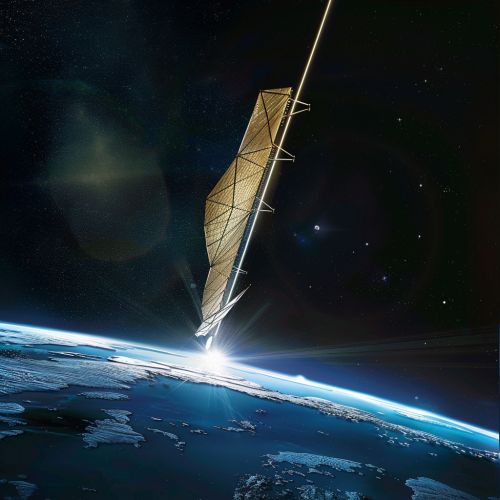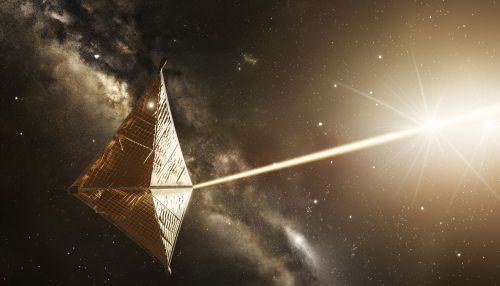Breakthrough Starshot
Overview
Breakthrough Starshot is an ambitious project under the Breakthrough Initiatives program, aiming to develop a fleet of light sail-propelled nanocraft capable of making the journey to the Alpha Centauri star system. The initiative, announced in 2016 by Yuri Milner, Stephen Hawking, and Mark Zuckerberg, seeks to achieve interstellar travel within a human lifetime by leveraging advancements in photonics, materials science, and miniaturization.
Objectives and Goals
The primary objective of Breakthrough Starshot is to send small, lightweight spacecraft, known as StarChips, to Alpha Centauri, our nearest stellar neighbor, located approximately 4.37 light-years away. The mission aims to achieve this by propelling the StarChips using powerful ground-based lasers, accelerating them to speeds of up to 20% of the speed of light (approximately 60,000 kilometers per second). This would allow the spacecraft to reach Alpha Centauri in about 20 years.
Technological Components
Light Sails
The propulsion method for Breakthrough Starshot involves the use of light sails, which are ultra-thin, highly reflective sails designed to harness the momentum of photons. These sails are made from advanced materials such as graphene or metamaterials that are both lightweight and durable. The light sails are expected to be only a few hundred atoms thick and capable of withstanding the intense radiation pressure exerted by the laser array.
StarChips
The StarChips are miniature spacecraft, each weighing only a few grams. These nanocraft are equipped with essential components such as cameras, sensors, communication equipment, and power sources. The miniaturization of these components is crucial for reducing the overall mass of the spacecraft, thereby making it feasible to accelerate them to relativistic speeds.
Laser Propulsion System
The propulsion system for Breakthrough Starshot consists of a ground-based array of high-powered lasers, collectively known as a phased array. These lasers will emit coherent light beams that are directed at the light sails, providing the necessary thrust to accelerate the StarChips. The phased array technology allows for precise control of the laser beams, ensuring that the sails remain correctly oriented during acceleration.


Challenges and Solutions
Interstellar Medium
One of the significant challenges for Breakthrough Starshot is the interaction of the StarChips with the interstellar medium, which consists of gas and dust particles. At relativistic speeds, collisions with these particles can cause significant damage to the spacecraft. To mitigate this, the StarChips are designed with protective coatings and shielding to minimize the impact of such collisions.
Communication
Communicating with the StarChips over interstellar distances poses another challenge. The spacecraft will need to transmit data back to Earth using low-power communication systems. To address this, the StarChips will employ laser communication technology, which offers higher data rates and greater efficiency compared to traditional radio frequency communication.
Power Supply
Providing a reliable power source for the StarChips during their journey is critical. The spacecraft will rely on radioisotope thermoelectric generators (RTGs) or advanced photovoltaic cells to generate the necessary power for their instruments and communication systems. These power sources must be lightweight and capable of operating efficiently in the harsh environment of space.
Potential Scientific Discoveries
The successful deployment of Breakthrough Starshot could lead to groundbreaking scientific discoveries. The StarChips are expected to capture high-resolution images and gather data on the planets and other celestial bodies within the Alpha Centauri system. This information could provide valuable insights into the potential habitability of exoplanets and the presence of extraterrestrial life.
Ethical and Philosophical Considerations
The Breakthrough Starshot project also raises several ethical and philosophical questions. The potential for contamination of other star systems and the long-term implications of interstellar travel are subjects of ongoing debate. Additionally, the project highlights the need for international collaboration and the establishment of guidelines for the exploration and utilization of space beyond our solar system.
Future Prospects
While Breakthrough Starshot represents a significant leap forward in interstellar exploration, it is only the beginning. The technologies developed for this mission could pave the way for more advanced and ambitious projects in the future. Continued advancements in propulsion, materials science, and miniaturization will be essential for realizing the dream of interstellar travel and expanding humanity's presence in the cosmos.
